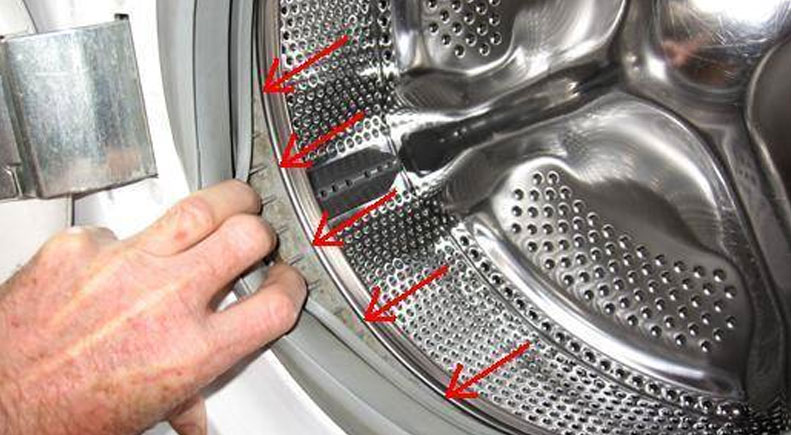
Rubber band rubbing against the drum of a washing machine is a fairly common situation that can happen with any machine. There are usually three reasons for this: either marriage, which is especially true if the washer is from the budget segment, or the sealant was incorrectly fitted and installed during a scheduled replacement, or there are problems with the cross or bearing assembly.
The first two reasons arise only immediately after the purchase of the machine or its repair, and the third problem appears several years after the active use of the home assistant. Regardless of the reason, it is not necessary to endure the sound of friction because if the drum rubs against the cuff of the hatch during rotation, then this is an obvious signal that home appliances need to be repaired urgently. So let's talk about the main ways to fix this problem.
There are many ways to fix friction on the cuff, but not all are suitable for homemakers and beginners without repair experience. For example, some masters recommend loosening the clamps, removing the rubber band with your hands, and adjusting its position again. But this method is only suitable for service center specialists since they can only do this with some washing machines. Plus, you need to know exactly how to properly dismantle the cuff and how it should stand in its place.
There is another professional method, but it is even more difficult and dangerous because you can permanently damage the parts of the washing machine. Specialists first remove the gum and then, with a knife, cut the edges that cling to the drum. The risk is that a person without knowledge may not determine the friction point necessary to cut with a clerical knife. Fortunately, there is a simple and safe repair method that any washing machine owner can handle. What to do?
This method could be better since you must scroll the drum for a long time, namely 100-120 times. But the main advantage of this repair option over others is the lack of risk of damaging the gum or the washing machine itself. After this procedure, you must run a test wash and listen to the operation of the machine. If the friction sound has disappeared completely, the problem has been fixed. If not, repeat steps 2 to 4 again.
But sometimes, the drum rubs against the cuff, not because the elastic needs to be installed correctly. If friction does not appear immediately after buying a washing machine or a planned replacement of a rubber seal but after a few years, then this is a signal that the cross is being destroyed. This is considered a serious problem because it leads to the backlash of the drum, which changes its trajectory and begins clinging to the home assistant's body. Such a malfunction is usually accompanied not only by rustling but also by strange knocks and clanks.
You must check the cross if you hear strange sounds from the washing machine that have not occurred before. You will have to dismantle and halve the tank to do this. However, it is not necessary to disassemble the device to suspect breakdowns of key elements. For example, if the shaft damage is serious, the bearing assembly will become unusable, signalled by rusty streaks on the back wall of the washing tank.
If the cross and the bearing assembly are faulty, sandpaper and temporary measures will not help. In this case, you must stop using the washing machine until a complete repair is done. To assess the condition of the machine, conduct a thorough diagnosis.
Copyright © 2020 Coimbatore Service.